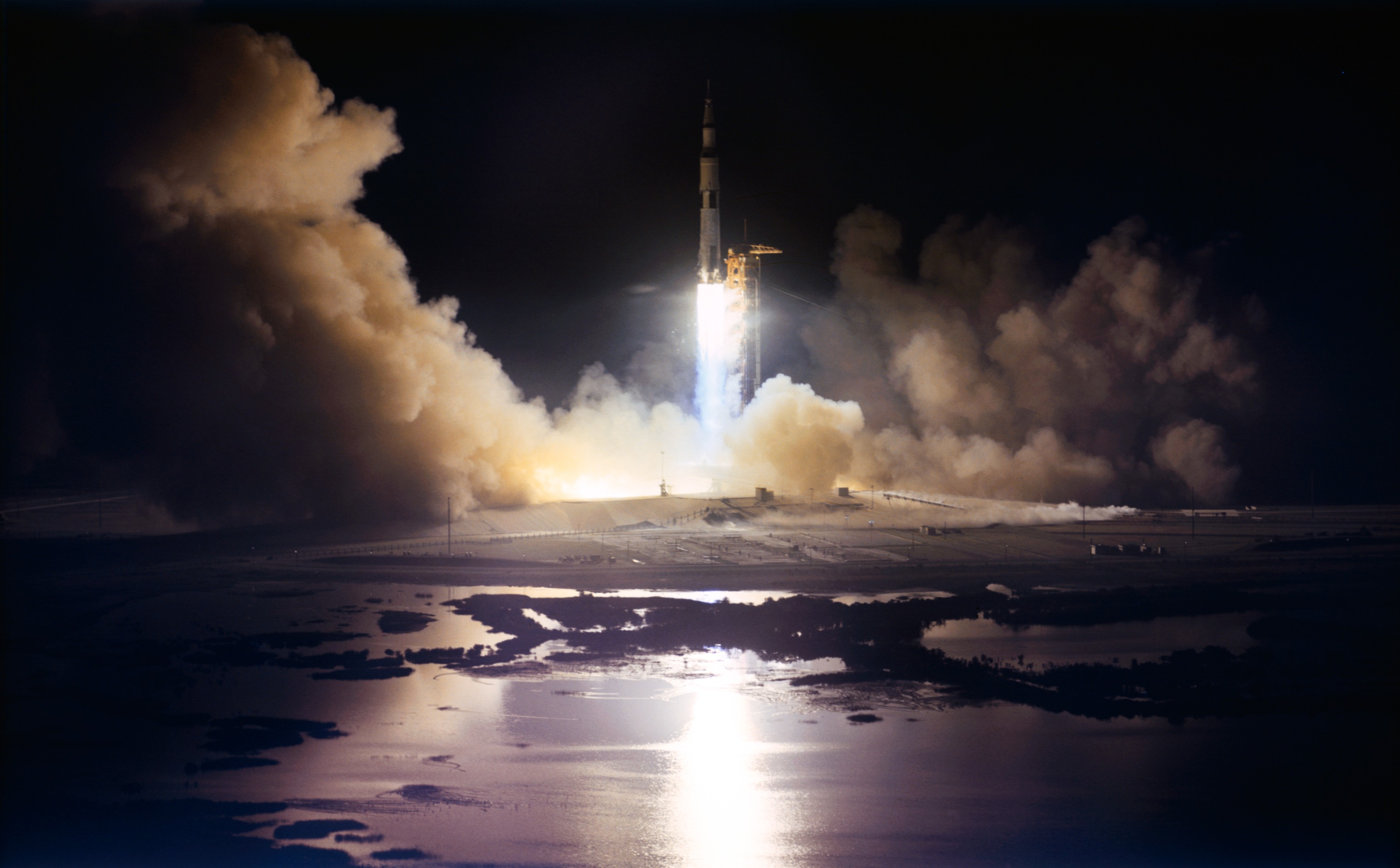
Forty-five years ago, the combined spacecraft of Apollo 17—the Command and Service Module (CSM), named “America”, and the spider-like Lunar Module (LM), dubbed “Challenger”—slipped smoothly into lunar orbit. In doing so, it represented the ninth time in four short years that humans had ventured from Earth, across a gulf of 240,000 miles (370,000 km), to reach the Moon. And for Apollo 17 astronauts Gene Cernan, Ron Evans and Harrison “Jack” Schmitt, they would be the last men to depart low-Earth orbit for the rest of the 20th century. Even today, as we head towards the end of the second decade of the 21st century, theirs is the most recent occasion that humans have journeyed to the Moon.
Video Credit: NASA
It is a sad footnote that only Schmitt now remains alive from the crew which embarked on the longest manned mission to the Moon, spent the greatest number of hours on the surface, performed the longest-duration “Moonwalks” and returned to Earth with the largest haul of lunar samples. Ron Evans died in April 1990, whilst the world lost Cernan earlier this year. The hands of fate which brought the Apollo 17 crew together has been explored in a previous AmericaSpace history article, and on the evening of 6 December 1972 the last human-carrying Saturn V stood ready to take flight from historic Pad 39A at the Kennedy Space Center (KSC) in Florida. In doing so, Cernan, Evans and Schmitt would become the first American spacefaring crew to launch in the hours of darkness; an accolade not to be repeated until the early Space Shuttle era, more than a decade later.
“That in itself was a real challenge,” Cernan recounted of the United States’ first night launch. “Your options in case you had a problem or an abort or whatever at night are cut in half. I’m a naval aviator. Landing aboard ship in the daytime is a very challenging experience. At night, it’s just you and your maker.”
Launch of Apollo 17 was targeted for 9:53 p.m. EST, at the start of a four-hour “window”. The three astronauts, clad in their snow-white space suits, were ensconced in their couches aboard America. Countdown operations proceeded without incident and at T-50 seconds the Saturn V transferred its systems to Internal Power. Then, at 30 seconds, the automated launch sequencer on the ground failed to properly command the oxygen tank of the rocket’s third stage to pressurize. Launch controllers responded by issuing the command manually, but the sequencer knew that it had not send the command and refused to proceed. The irony was not lost on the crew. “Everything was fine, but the computer didn’t know it,” said Schmitt in a NASA oral history. “When they went through the final sequence, the computer saw that the signal hadn’t been sent and it said Hold.”
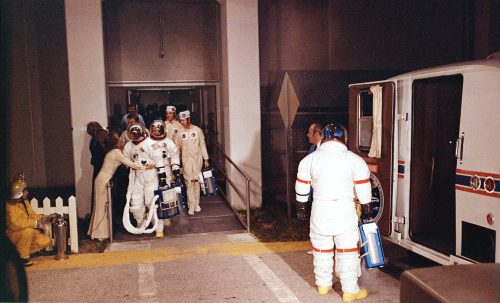
From the commander’s seat on the left side of the Command Module, Cernan was perplexed. The checkouts of both the spacecraft and the rocket had gone smoothly and, to the best of his knowledge, the tanking of the third stage was “Go”, according to his displays and pressures were nominal.
None of the astronauts wanted to stand-down, for a scrub would raise the spectre of a month-long delay before Apollo 17 could fly. The next suitable lunar “launch window” for the mission would occur between 4-6 January 1973, followed by another month before a handful of opportunities in early February. “You certainly don’t want to recycle for another month,” said Schmitt, quoted in the Apollo Lunar Surface Journal. “That was the first thought we had on the launch pad…was that, well, let’s hope that we don’t have to go through this for another month. You would’ve gotten into it and done it and never noticed the difference, but still at the immediate point of being ready to launch, you’re ready to launch. There’s no question about that.”
After a while, Spacecraft Test Conductor Clarence “Skip” Chauvin radioed the crew that the countdown clock was being recycled to T-22 minutes, whilst the glitch was worked. Hearing Chauvin’s reassurances, and having worked extensively with him during training, the crew’s fears of a scrub were assuaged. With the gentle hum of the spacecraft fans providing their own lullaby, Schmitt fell asleep. Several miles away, in the firing room of the Launch Control Center (LCC), Apollo Program Director Rocco Petrone briefed U.S. Vice President Spiro Agnew and NASA Administrator James Fletcher—both of whom were in Florida for the Apollo 17 launch—on the status of the problem and its resolution.
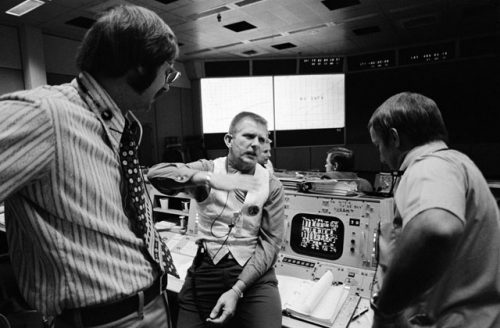
The clock was picked up at T-22 minutes a little after 11 p.m. and began counting smoothly towards another hold at T-8 minutes. During the hold time, Cernan thanked the entire NASA and contractor workforce for their hardware, their help, their prayers, “and everything else that goes into making a good mission”. As engineers at the Marshall Space Flight Center (MSFC) in Huntsville, Ala., worked on a breadboard mockup of the hardware in an effort to resolve the third-stage glitch, Apollo 17’s hold time was repeatedly extended. Passing midnight, everyone was keenly aware that the launch window closed at 1:31 a.m. on 7 December. A scrub became an unwelcome, yet realistic possibility.
Then, at a quarter past midnight, still holding at T-8, a decision was made to pick up the count at 12:25 a.m., tracking a liftoff at 12:33 a.m. “The tests being run…at the Marshall Space Flight Center…indicate that our system is good, the way it has been reconfigured,” announced the Public Affairs Officer (PAO). “All elements now during this ten minutes will be preparing their various systems to pick up the clock at the T-8-minute mark….We just received a “Go” from the Superintendent of Range Operations, indicating that the range has been cleared around the new flight azimuth.”
Right on cue, the clock resumed counting at 12:25 a.m. The minutes ticked away. At T-45 seconds, Cernan completed a final guidance system alignment, his final expected act aboard the spacecraft, ahead of launch. From Mission Control in Houston, Texas, Capcom Bob Overmyer notified him of the countdown milestones, until at T-8.9 seconds the five F-1 engines at the base of the Saturn V’s first stage erupted to life. “You could feel the ignition,” Cernan recalled later, as recorded in the Apollo Lunar Surface Journal. “You could feel the engines come up to speed. Just prior to liftoff and during the first few seconds of liftoff, both [Evans] and I could see the reflection of the engine ignition out the left-hand window and the hatch window in the [boost protective cover]. We could not see the first, but could see a red glow through the windows, reflecting apparently off the surface.”
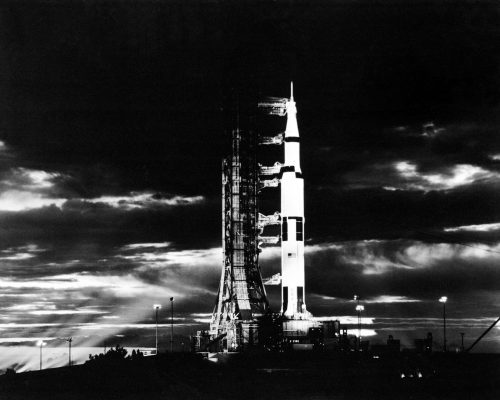
In his post-flight debrief, Cernan compared riding the Saturn V during first-stage flight as “like a big ol’ freight train, sort of starting to rumble and shake and rattle”. He had flown the giant rocket before, on Apollo 10 in May 1969, whilst Evans and Schmitt were both embarking on their first space missions.
“Look at the light!” exulted Cernan, as the darkness of the slumbering Florida instantaneously morphed into artificial daylight. “Woohoo!” was Ron Evans’ scream of delight, with Schmitt adding a “Wow…woozle!” as the rocket cleared the tower and began to climb. Due to the nocturnal nature of the launch, the crew had turned up the lights inside the spacecraft, leaving a relatively limited perspective of the fireshow outside.
From the ground, PAO Jack King had earlier noted that Apollo 17’s liftoff would produce “approximately 7,500 foot-candles, or 80 lumens per square meter, from the flame of the first-stage engines. “This is almost equivalent to daylight,” he explained. “Searchlights will also illuminate the Apollo 17 for the first 60 feet (18 meters) of its flight.” Now, as the Saturn V ascended, King was awestruck. “It’s lighting up the sky,” he exulted. “It’s just like daylight, here at the Kennedy Space Center!”
Within ten minutes of leaving Florida, Apollo 17 reached low-Earth orbit and the pieces were set for humanity’s last voyage to the Moon. And today, 45 years later, it remains to be seen when human explorers will follow in their exalted footsteps.





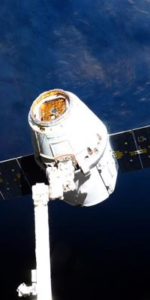
Apollo defines greatness. How interesting it would be to spend an hour with Jack Schmitt to learn first-hand his experiences on the lunar surface.